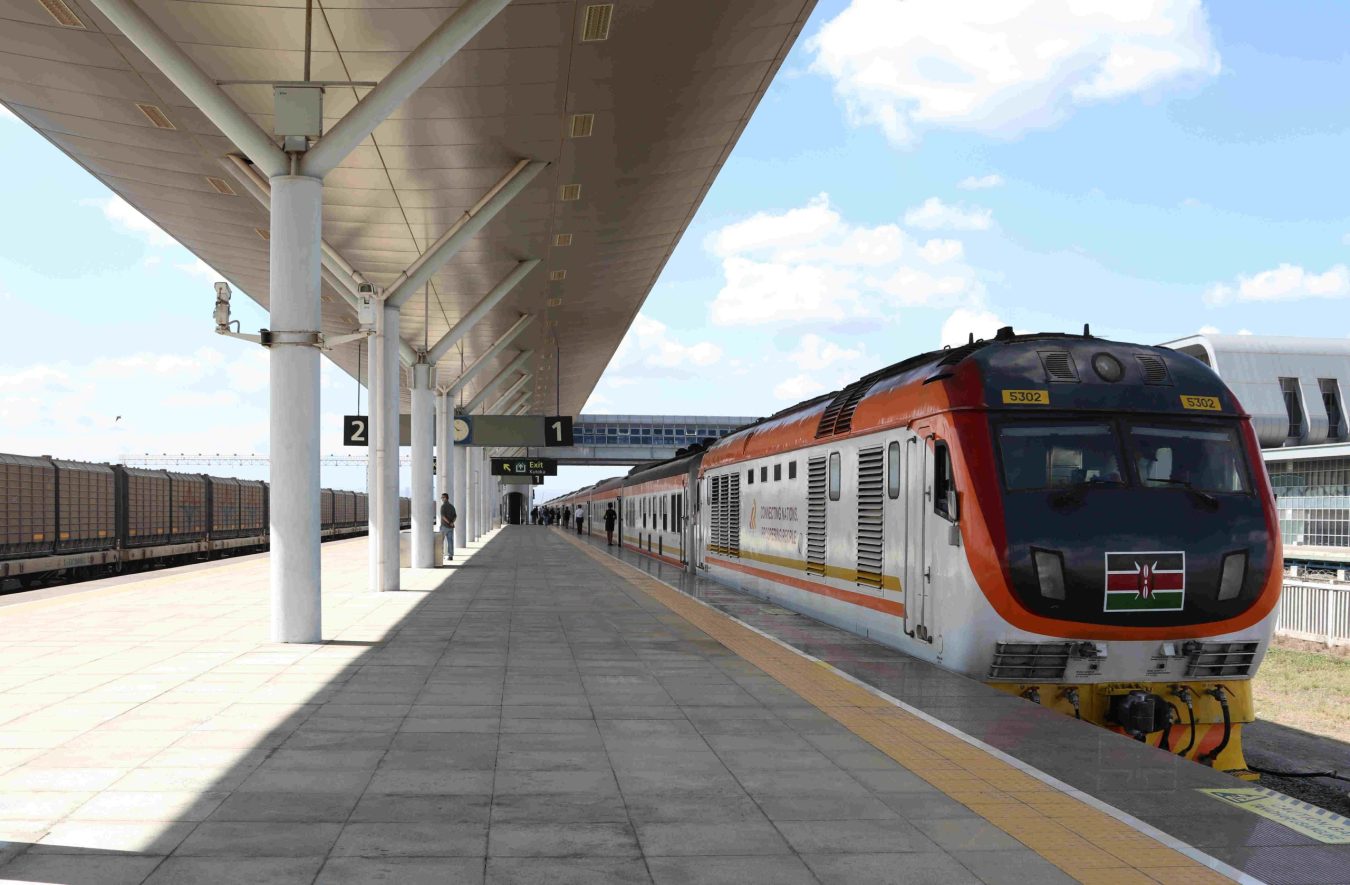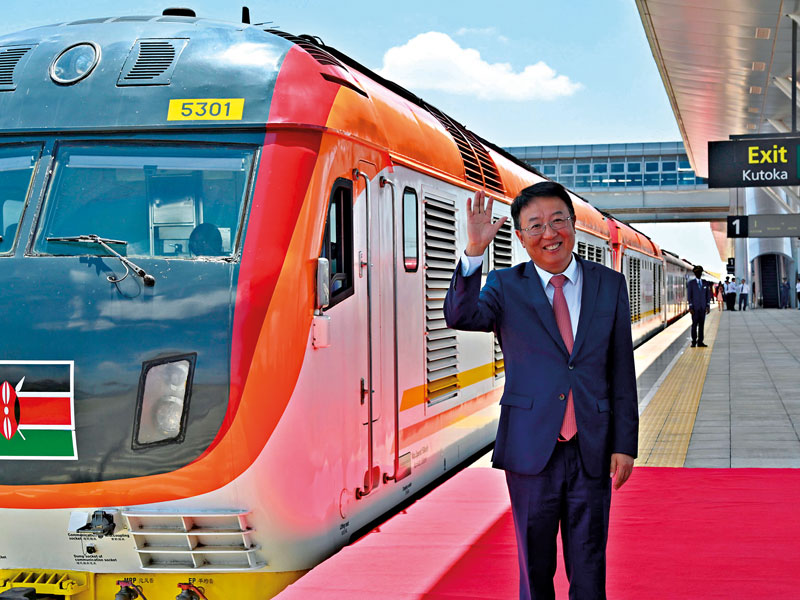There is no doubt that since its invention, railways have played an important role in the economic development of the world. Whether we are talking about the mid-19th century American Wild West or the frozen steppes of Russia, it is undeniable that the existence of a railway in a region was synonymous with the arrival of progress. That’s what Kenya believed six years ago when it decided to sign a project with a Chinese state giant to build a railway line across the country. The project has not proved effective and the African country’s budget has been saddled with hundreds of millions of dollars. The project has become the subject of an investigation into the strategy of Chinese investors abroad.
Kenya’s Standard Gauge Railway, a project known as the Standard Gauge Railway, was touted at its launch as a major economic driver that will benefit the region. A railway would run east-west across the country from the Indian Ocean (Mombasa) to the western border with Uganda. Six years after its inauguration, the railway has become a financial burden for the country and a key cause of its deteriorating relationship with China. The line has become stuck a little further from the country’s capital Nairobi to the town of Naivasha, some 300 kilometres from the western border.
The work was started by the China Road and Bridge Corporation under former Kenyan President Uhuru Kenyatta under a no-bid contract and a USD 3.6bn loan from China’s Exim Bank.
An optimistic feasibility study
The feasibility study carried out claimed that the rail project would become profitable by transporting 22 million tonnes of freight per year, i.e. 20 trains per day. This is more than double the current operating capacity
of the line, according to a study by the Kenya Institute for Public Policy Research and Analysis.
The line in question ended up operating only 25% of the quantity, below the break-even point. In 2021, the railroad lost USD 200 million. The measures initially adopted, namely a ban on trucking, have aroused the displeasure of truckers and have not proved effective.
Shortly after being elected in 2022, President William Ruto reversed Kenyatta’s order, but the debts to the Chinese remained. After several years of deferred payments, Kenya’s first payment to China in 2021 was over USD 237 million. In 2022, this more than doubled to USD 558 million.
Chinese loans now account for 67% of Kenya’s debt, which has reached an all-time high of USD 82 billion, or about three-quarters of the country’s gross domestic product. As Kenya’s debt payments rise, they leave less money for other purposes, such as healthcare and security.
Shortly after taking office, President Kenyey, following a decision by the Kenyan judiciary, denounced three quarters of the loan agreement on the grounds that it had been committed non-transparently, outside a competitive procedure.
China refuses loan extension, Uganda picks its own builders
A Kenyan request for a 30-year loan extension has been rejected. What’s more, last summer China fined Kenya nearly USD 11m, saying it had defaulted on its railway payments.
Under pressure from increasingly problematic lending around the world, China has begun to pull back on financing. In Kenya, China said it would not borrow more money to extend the railway to Uganda and beyond. Moreover, in January Uganda announced it was dropping its contract with the Chinese builder in favour of one from Turkey to build the line to the Kenyan border.
How autonomous were Chinese companies
All these developments, as I said, have become the subject of recent academic research which has set out to answer some questions. Are Chinese state-owned companies instruments of China’s central political power or are they somewhat autonomous entities? Do they arrive in investment destination countries with well- drawn agendas from home or not? The answers were somewhat surprising, far from what many might think. The study on the evolution of the Kenyan project was based on interviews with managers and employees in the construction and operational departments of the China Road and Bridge Corporation, opinion formers in Kenya and representatives of the Kenya Railways Corporation. Local government workers, private sector representatives, lawyers and researchers were consulted.
The study found that decisions by Chinese state-owned enterprises in Kenya do not necessarily exhibit a grand centralized strategy at the level of the Chinese state, but a combination, often formed ad hoc between changing political and economic circumstances in China, state interests and private interests of Chinese companies.
In Kenya, the China Road and Bridge Corporation has constantly changed its strategies. It has also adapted to local circumstances in the country and across East Africa, rather than just imposing its strategic priorities. This has compromised its own economic productivity interests and its public image.
Thus one of the strategies chosen was land purchases, often made prior to the start of the project in order to solve problems related to delayed land compensation.
This involved direct payments, negotiated on a case-by- case basis, to landowners. As a result, landowners released land for project construction before land settlements were formally approved by the Kenyan state. One of the reasons for this rather unconventional approach was to reduce costs.
The Chinese company had learned from the early stage of the project that late delivery of even a small plot of land could increase the cost of the project if labour and equipment were idle.
Then, the operation of the line was entrusted to a Chinese company (SGR) as operating the railway would not be financially beneficial for the company. But the stakes were too high to leave it to chance. The operational challenges that a new company could have faced could have damaged the public image of the project as well as the Chinese corporation itself. The company therefore had to balance short-term financial interests with long-term reputational concerns.
All this shows that Beijing’s infrastructure development strategies are not pre-determined, but change and can even be reversed due to changing circumstances in overseas regions. These strategies aimed at saving the Chinese company’s face are important for winning other contracts. Despite the dispute, China Road and Bridge Corporation has been awarded other key national projects, such as the Nairobi Expressway, where work started in autumn 2020. “This highlights that African countries are not passive recipients of Chinese-funded projects. They have an important role to play in counterbalancing Chinese actors to shape the way these projects are carried out on the ground,” the study recommends.
Share on:





